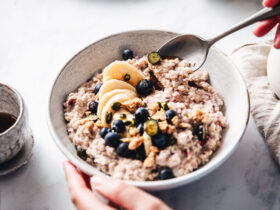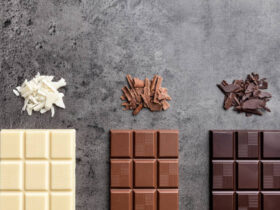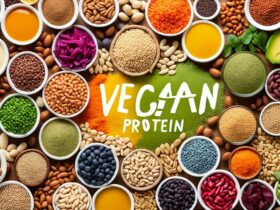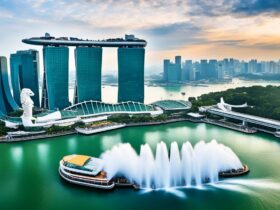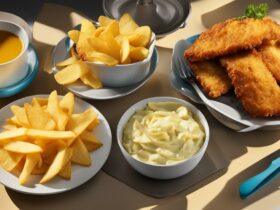Why Choose a Low Sodium Diet?
A low sodium diet offers several health benefits. By reducing sodium intake, individuals can lower their blood pressure, reduce the risk of heart disease, and decrease the chances of developing kidney issues. Additionally, a low sodium diet promotes better weight management, reduces fluid retention, and can even enhance the effectiveness of certain medications.Understanding Sodium and its Effects on Health
Sodium is a mineral that plays a vital role in maintaining fluid balance in the body. However, excessive sodium consumption can lead to health problems. High sodium levels cause the body to retain water, increasing blood volume and putting pressure on the blood vessels. This elevated pressure can strain the cardiovascular system, leading to hypertension and other cardiovascular conditions.Setting Sodium Intake Goals
Before creating a low sodium meal plan, it is essential to set specific sodium intake goals. The American Heart Association recommends limiting daily sodium intake to 1,500 milligrams (mg) or less for individuals with high blood pressure or at risk of developing it. For the general population, the recommended daily limit is 2,300 mg or less.5 เทคนิค ลดโซเดียม
Planning Low Sodium Meals: Key Considerations
When designing a low sodium meal plan, it’s crucial to focus on fresh, whole foods and limit processed and packaged foods that are often high in sodium. Here are some key considerations for planning low sodium meals:- Opt for fresh fruits and vegetables as they are naturally low in sodium.
- Choose lean proteins such as poultry, fish, and legumes.
- Use herbs, spices, and other flavor-enhancing ingredients to season your meals instead of relying on salt.
- Be mindful of condiments, sauces, and salad dressings, as they can be significant sources of hidden sodium.
- Read food labels carefully and choose low sodium or sodium-free alternatives whenever possible.
Building a Balanced Low Sodium Meal Plan
Creating a well-balanced low sodium meal plan involves incorporating a variety of nutrient-rich foods. Here are some ideas for low sodium meals across different categories:Breakfast Ideas
- Veggie omelet with spinach, tomatoes, and mushrooms.
- Oatmeal topped with fresh berries and a sprinkle of cinnamon.
- Greek yogurt with sliced almonds and a drizzle of honey.
Lunch Suggestions
- Grilled chicken salad with mixed greens, cherry tomatoes, cucumbers, and a light vinaigrette.
- Whole wheat wrap filled with turkey, avocado, lettuce, and tomato.
- Lentil soup with a side of whole grain bread.
Dinner Recipes
- Baked cod with roasted vegetables and quinoa.
- Grilled shrimp skewers with a side of steamed broccoli and brown rice.
- Veggie stir-fry with tofu, snap peas, carrots, and brown rice.
Snacks and Desserts
- Fresh fruit salad with a dollop of Greek yogurt.
- Air-popped popcorn sprinkled with nutritional yeast.
- Homemade trail mix with unsalted nuts and dried fruits.
Tips for Reducing Sodium in Everyday Cooking
Reducing sodium in everyday cooking can be simple with a few adjustments. Here are some tips:- Gradually reduce the amount of salt used in recipes, allowing your taste buds to adjust.
- Experiment with herbs, spices, and citrus juices to enhance the flavors of your dishes.
- Rinse canned vegetables and legumes under cold water to remove excess sodium.
- Make homemade sauces and dressings to control sodium content.
- Use salt substitutes sparingly and consult with your healthcare provider if you have specific dietary restrictions.
Low Sodium Recipe Ideas
Here are a few delicious low sodium recipes to add variety to your meal plan:Zesty Lemon Herb Chicken
Ingredients:- 4 boneless, skinless chicken breasts
- 2 lemons (juiced)
- 2 cloves of garlic (minced)
- 1 tablespoon fresh rosemary (chopped)
- 1 tablespoon fresh thyme (chopped)
- Salt-free seasoning blend
- Olive oil
- Preheat the oven to 400°F (200°C).
- In a small bowl, mix lemon juice, minced garlic, rosemary, thyme, and salt-free seasoning blend.
- Place the chicken breasts in a baking dish and pour the lemon herb mixture over them.
- Drizzle with olive oil and bake for approximately 25-30 minutes or until the chicken is cooked through.
- Serve with a side of roasted vegetables or brown rice.
Quinoa and Vegetable Stir-Fry
Ingredients:- 1 cup quinoa
- 2 cups water
- 1 tablespoon olive oil
- 1 onion (chopped)
- 2 cloves of garlic (minced)
- Assorted vegetables (e.g., bell peppers, broccoli, carrots) (chopped)
- Low sodium soy sauce
- Sesame oil
- Rinse the quinoa under cold water.
- In a saucepan, bring the water to a boil, then add the quinoa and reduce heat to a simmer. Cook for 15-20 minutes or until the quinoa is tender.
- Heat olive oil in a large skillet or wok over medium heat.
- Sauté the onion and garlic until fragrant and slightly golden.
- Add the chopped vegetables and stir-fry for a few minutes until they are tender-crisp.
- Stir in the cooked quinoa and season with low sodium soy sauce and a drizzle of sesame oil.
- Cook for an additional 2-3 minutes, stirring well to combine all the flavors.
- Serve hot as a nutritious and flavorful meal.
Baked Salmon with Fresh Herbs
Ingredients:- 4 salmon fillets
- 2 tablespoons fresh dill (chopped)
- 2 tablespoons fresh parsley (chopped)
- 2 tablespoons fresh lemon juice
- 1 tablespoon olive oil
- Salt-free lemon herb seasoning
- Preheat the oven to 375°F (190°C).
- Place the salmon fillets on a baking sheet lined with parchment paper.
- In a small bowl, combine chopped dill, parsley, lemon juice, olive oil, and salt-free lemon herb seasoning.
- Brush the herb mixture evenly over the salmon fillets.
- Bake for approximately 12-15 minutes or until the salmon is cooked to your desired level of doneness.
- Serve with a side of steamed vegetables or a green salad.
Conclusion
Designing effective low sodium meal plans is a valuable step towards achieving a balanced diet. By reducing sodium intake and incorporating nutrient-rich foods, individuals can improve their overall health and reduce the risk of chronic conditions. Remember to focus on fresh ingredients, experiment with herbs and spices, and make mindful choices when selecting packaged foods. With a little creativity and planning, you can enjoy delicious meals that are both low in sodium and packed with flavor.Are Black Truffles Suitable for a Low Sodium Diet?
Black truffles, a delicacy in the world of culinary delights, may not be suitable for a low sodium diet. With their distinct aroma and flavor, black truffles are used sparingly to enhance dishes. However, due to their high natural sodium content, individuals following a low sodium diet should consider other alternatives to savor the world of black truffles exploration.


